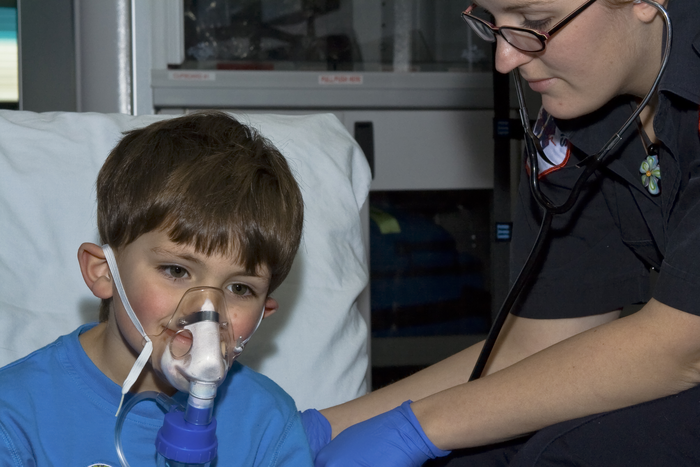
Pediatric emergencies are always a bit unsettling. Fortunately, children make up a minority of our patients, but when these emergencies occur, it can be stressful—for the patient, for the patient’s family, and for you, the responder.
And when children’s emergencies involve the respiratory system, they can be even more harrowing. Few things are scarier than a child who can't breathe. So, to calm our nerves, let's discuss four common pediatric respiratory emergencies and how to avoid them.
1. Asthma
Asthma is a common respiratory condition that is number three on the list of causes of children’s hospital stays. This chronic disease of the lower airways is exacerbated by usually innocuous stimuli, causing bronchospasms and associated wheezing. The patient typically keeps home treatments available, but if the updraft doesn't work, or if the patient is out of medication, a respiratory emergency can easily commence.
2. Croup
Croup is another common condition in children and typically presents in children between six months and 2 1/2 years of age. Most of us are familiar with the associated seal bark (stridor), caused by upper-airway inflammation and edema. It is usually caused by a virus and accompanied by a low-grade fever and a runny nose.
3. Bronchiolitis
Another condition associated with wheezing and sometimes mistaken for asthma is bronchiolitis, which is viral and typically strikes children younger than two years of age. It is the common lower-respiratory tract condition in children and the leading cause of hospitalization in infants. The peak age for bronchiolitis is two to six months of age and if left untreated can lead to respiratory failure and death.
4. Pneumonia
Many of us think of pneumonia as a common occurrence in the elderly, which it is. But it is also a serious health risk in children. It can be bacterial or viral and typically presents with fever, productive cough, chest pain, and congestion. In the very young, it can simply present as lethargy, poor feeding, or irritability. Pneumonia is the cause of 14% of deaths in children under five. This condition is not to be taken lightly, so stay alert for the symptoms.
The Role of the Responder
As an emergency responder, there is little you can do to prevent such conditions, but you can certainly prevent their associated complications—the most imperative being respiratory arrest. Stay alert for signs of respiratory insufficiency and failure that, if left untreated, can lead to arrest. These include:
- Rapid or labored breathing
- Nasal flaring
- Use of accessory muscles
- Grunting
- Wheezing
- Abnormal breath sounds
- Retractions
- Positioning (tripod)
- Irritability
- Lethargy
Pediatric respiratory emergencies are frightening for all involved. But readiness, alertness, and decisive action on your part can prevent many of the associated complications. Your primary responsibility is early detection, so recognize the signs and treat them swiftly and accordingly.
Editor's Note: This blog was originally published in May of 2022. It has been re-published with additional up to date content.















